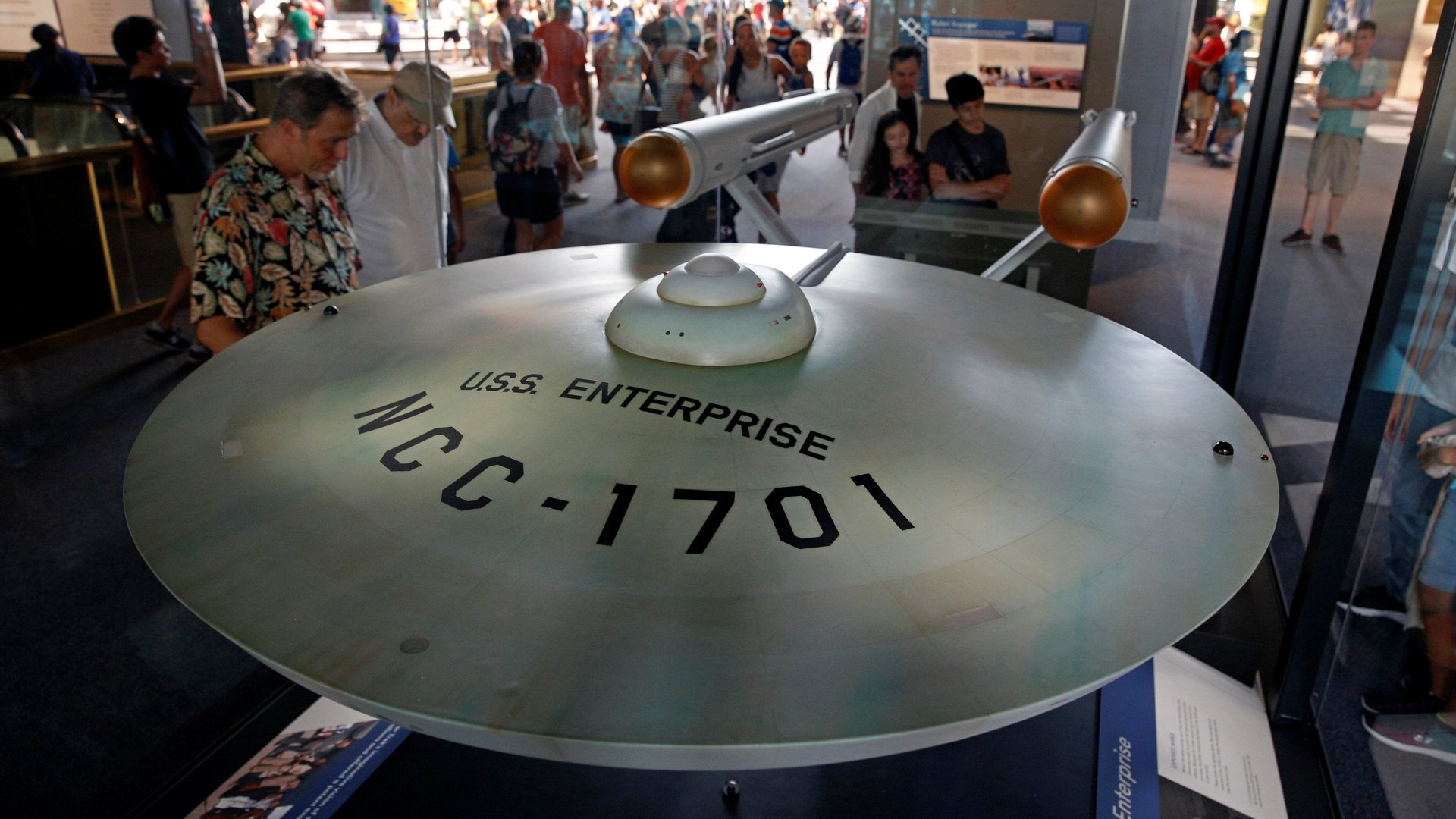Here are all the technologies Star Trek accurately predicted
On September 8, 1966, NBC aired the first episode of a new TV series about a starship on a five year mission of space exploration. Today, Star Trek turns 50.


On September 8, 1966, NBC aired the first episode of a new TV series about a starship on a five year mission of space exploration. Today, Star Trek turns 50.
The first episode told of an endangered shape-shifting, salt-sucking alien posing as a human woman to lure prey to its lair. (The creature was killed rather than added to the red list). Half a century, 726 episodes, four spin-off series (a fifth is on its way), and 13 movies later, we’ve yet to meet any metamorphosing salt vampires in real life.
On the other hand, a surprising number of fanciful ideas and technologies that appeared on the show over the years have come to pass in the real world. Star Trek, it seems, is one of the great augurs of 21st century living.
Some technologies, like flip-phone communicators, are the fairly predictable result of fiction inspiring fact—Star Trek is a commonly cited influence for scientists. Others, like transparent aluminum, are things even Mr. Spock couldn’t have seen coming.
Here’s a list of all the real-world tech, presaged Star Trek, we could find:
- Tablet computers
- Tractor beams
- Tricorders (there’s also an X Prize for that)
- Flip communicators (and wearable badge communicators)
- Hyposprays
- Replicators
- Cloaking devices
- Voice interface computers (hello Siri)
- Transparent aluminum
- Bluetooth headsets (Uhura had one first)
- Google Glass
- Portable memory (from floppy disks to USB sticks)
- Focused ultrasound technology
- Biometric data tracking for health and verifying identity
- GPS
- Automatic doors
- Big screen displays
- Real-time universal translators
- Teleconferencing
- VISOR bionic eyes for the blind
- Diagnostic beds
There are a few technologies we’re still waiting for:
- Warp drives/matter-antimatter power
- Transporters (“Beam me up”)
- Holodecks
- A moneyless society
- The Vulcan nerve pinch
Scientists, make it so.